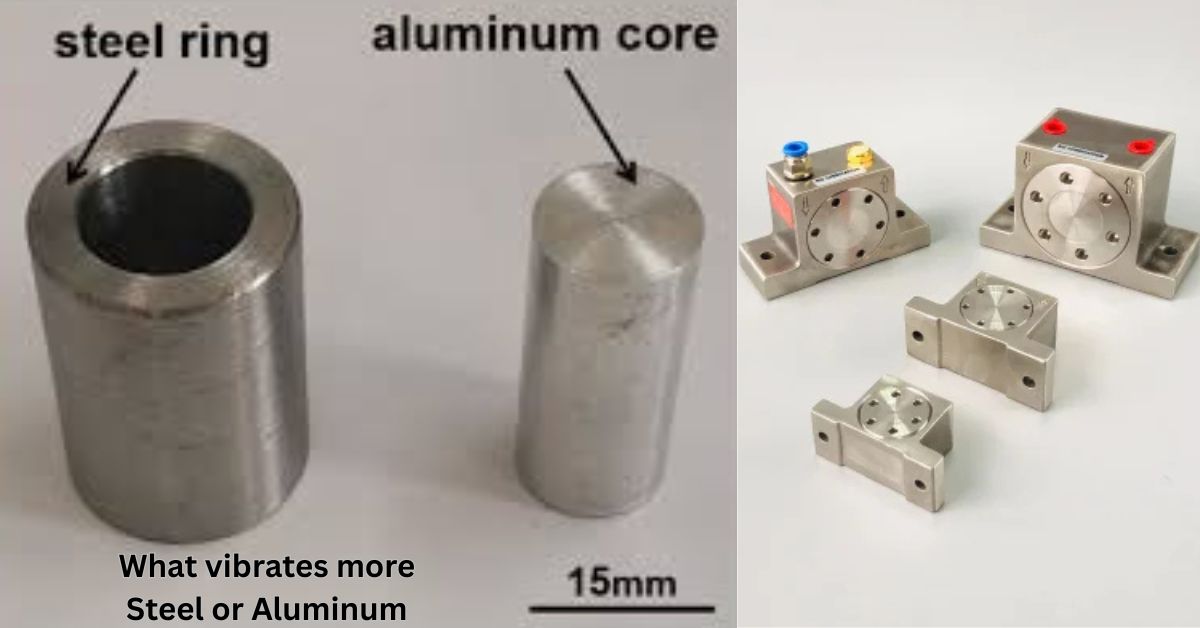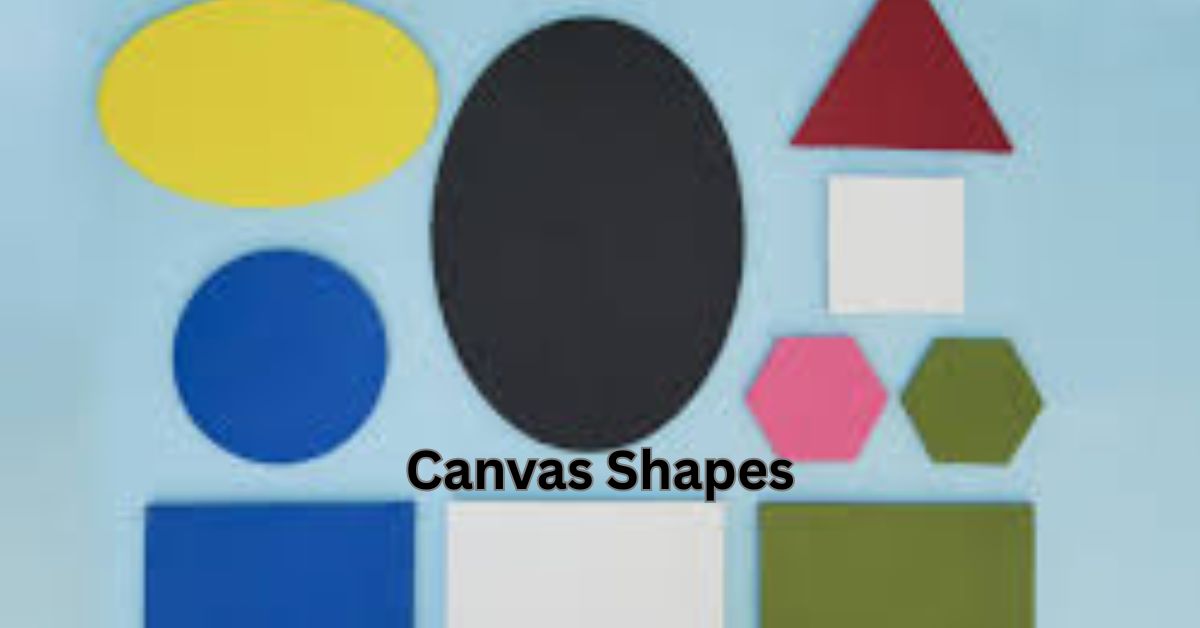GENERAL
Steel vs. Aluminum: Which Vibrates More?

Steel vs. Aluminum: Which Vibrates More?
When it comes to materials used in construction, engineering, and manufacturing, steel and aluminum are two of the most commonly used metals. Both have distinct advantages in various applications, but how do they compare when it comes to their vibration properties? In this article, we will dive into the science behind how steel and aluminum vibrate, and which one vibrates more in different scenarios. We’ll explore the factors that contribute to these differences and discuss their implications for various industries.
Understanding Vibration in Materials
Vibration refers to the oscillation or back-and-forth movement of an object around a central point. It occurs when an object is disturbed from its equilibrium, and it can be characterized by factors such as frequency, amplitude, and the material’s inherent stiffness.
The way a material vibrates depends on its physical properties, including its mass, density, elasticity, and the way its molecules interact. These properties determine how quickly or slowly a material will oscillate, as well as how much energy it will absorb or dissipate during the vibration.
Steel: Vibration Characteristics
Steel is a metal alloy made primarily of iron, carbon, and other elements. Known for its strength and durability, steel also has unique vibration characteristics.
Density and Stiffness
One of the most important factors in determining how a material vibrates is its density. Steel is denser than aluminum, with a density of around 7.85 grams per cubic centimeter (g/cm³). This higher density means that steel has more mass for a given volume, which can influence how it responds to vibrations.
In terms of stiffness, steel also tends to be stiffer than aluminum. This stiffness, known as the Young’s Modulus, refers to the material’s ability to resist deformation under stress. Steel’s stiffness means it can resist changes in shape when subjected to vibrations, leading to less pronounced oscillations.
Damping Properties
Damping refers to the material’s ability to absorb and dissipate the energy from vibrations. Steel generally has lower damping compared to materials like rubber or composites, but it still has some ability to dampen vibrations, especially in thicker sections. However, the lower damping ability of steel can cause vibrations to persist longer, particularly in large structures or objects made of steel.
Vibration Frequency in Steel
Due to its density and stiffness, steel tends to vibrate at lower frequencies compared to lighter materials. The natural frequency of a material is the frequency at which it tends to vibrate when disturbed. Steel’s higher density means that its natural frequency is lower, leading to slower oscillations. While steel may not vibrate as much in terms of amplitude, it can still resonate at its natural frequencies, especially if it is subjected to a repeated or continuous force.
Aluminum: Vibration Characteristics
Aluminum is a lightweight, corrosion-resistant metal with excellent thermal and electrical conductivity. It’s widely used in industries ranging from aerospace to construction. Aluminum’s vibration properties differ significantly from those of steel.
Density and Stiffness
Aluminum has a lower density than steel, around 2.7 g/cm³. This lower density means that aluminum has less mass for a given volume, making it more prone to oscillations when subjected to external forces. Aluminum’s lower density contributes to its ability to vibrate at higher frequencies compared to steel.
In terms of stiffness, aluminum is also less stiff than steel. Its Young’s Modulus is lower, which means that it deforms more easily under stress. When aluminum is subjected to vibration, it will typically experience larger amplitude oscillations, as the material is more flexible and less resistant to deformation.
Damping Properties
Aluminum has better damping properties than steel. Its ability to absorb and dissipate energy from vibrations is superior, meaning that vibrations tend to fade more quickly in aluminum compared to steel. However, while aluminum may experience more pronounced vibrations initially, it will generally settle more quickly than steel.
Vibration Frequency in Aluminum
Given its lower density and stiffness, aluminum tends to vibrate at higher frequencies than steel. The material’s lighter weight and lower stiffness mean that aluminum will oscillate more rapidly in response to external forces. In some applications, such as musical instruments or machinery, aluminum’s ability to vibrate at higher frequencies can be an advantage, contributing to its desirable sound or mechanical properties.
Factors That Influence Vibration
While the inherent properties of steel and aluminum play a significant role in determining how each material vibrates, there are other factors that can influence vibration as well.
Shape and Size of the Object
The size and shape of the object made from steel or aluminum will affect how it vibrates. For example, a long, thin piece of steel may vibrate differently than a thick block of aluminum, even though the materials themselves have different densities and stiffnesses. Larger and more complex shapes may have more complicated vibration characteristics, including multiple natural frequencies.
Surface Treatment and Coatings
Surface treatments, coatings, and finishes can also influence how a material vibrates. For instance, anodized aluminum may have different vibration properties compared to bare aluminum. Similarly, steel coated with a layer of paint or protective coating may exhibit different damping characteristics than untreated steel.
Temperature
Temperature can significantly affect the vibration properties of both steel and aluminum. As materials heat up, their molecular structure changes, potentially altering their stiffness, damping properties, and vibration frequencies. Aluminum is particularly sensitive to temperature changes and can experience more dramatic shifts in vibration behavior than steel under varying thermal conditions.
Which Vibrates More: Steel or Aluminum?
The short answer to the question of which material vibrates more is aluminum. Due to its lower density and stiffness, aluminum tends to vibrate at higher frequencies and larger amplitudes compared to steel. This is especially true in situations where the material is subjected to mechanical forces, such as in construction, automotive, and aerospace applications.
However, steel’s higher density and stiffness mean that it is generally less responsive to vibration. While steel may not vibrate as much in terms of amplitude, it tends to resonate at lower frequencies and may continue vibrating for a longer period due to its lower damping properties. In some applications, such as in structural engineering or machinery, this can be both an advantage and a disadvantage, depending on the specific requirements of the project.
Applications and Implications
The differences in vibration properties between steel and aluminum have important implications for a wide range of industries.
Construction and Architecture
In construction, steel is often favored for its strength and ability to withstand vibrations, particularly in large structures like bridges or skyscrapers. Steel’s lower vibration amplitude can reduce the risk of structural damage caused by resonating frequencies. Aluminum, on the other hand, might be used in areas where lightweight materials are needed, such as in roofing or cladding, though its higher vibration frequency might not always be desirable.
Automotive and Aerospace
In the automotive and aerospace industries, weight reduction is often a critical factor. Aluminum’s lighter weight and higher vibration frequency make it an ideal choice for components that need to be both strong and lightweight, such as aircraft fuselages and automotive body panels. However, the ability of aluminum to dissipate vibrations quickly can also be beneficial in these industries, where noise reduction and smooth operation are crucial.
Musical Instruments
Aluminum is sometimes used in musical instruments due to its ability to vibrate at higher frequencies, producing unique tones. Steel, due to its lower vibration properties, may be used in certain parts of instruments like stringed instruments where vibration control is important.
Conclusion
In conclusion, while both steel and aluminum are essential materials with their respective benefits, aluminum tends to vibrate more than steel due to its lower density and stiffness. However, each material’s vibration properties depend on a variety of factors, including the specific application, size, shape, and environmental conditions. Whether you are working in construction, manufacturing, or another industry, understanding the vibration characteristics of these metals can help you make more informed decisions about which material to use.
GENERAL
Unveiling the Woman Behind Andre Hakkak wife
GENERAL
Unpacking R.A.C.E.S: What Does It Really Stand For?
GENERAL
Exploring Canvas Shapes: Unlocking Creative Possibilities

Exploring Canvas Shapes: Unlocking Creative Possibilities
When it comes to creating art, the canvas is often the first thing that artists think about. Traditionally, canvases have been rectangular or square, but today’s artists are embracing a broader variety of canvas shapes that open up new realms of creativity. Exploring canvas shapes can unlock a world of artistic possibilities, allowing artists to break free from convention and experiment with their compositions in unique and exciting ways.
In this article, we will dive into the various canvas shapes available to artists, how to use them to enhance creativity, and how these shapes influence the final artwork. Whether you’re an aspiring artist or an experienced creator, this guide will help you unlock the full potential of your artistic endeavors.
The Traditional Canvas: Rectangular and Square
Before exploring unconventional shapes, it’s important to acknowledge the classic and still widely used rectangular and square canvases. These shapes have been the staple of art for centuries and are associated with some of the most iconic works of art.
1. The Rectangle
The rectangular canvas is the most commonly used shape in traditional art. Whether in landscape or portrait orientation, rectangular canvases provide artists with a balanced area to express their ideas. The long, wide surface is perfect for creating expansive compositions, such as landscapes or cityscapes. Many Renaissance paintings and classical works feature large, rectangular canvases that allowed artists to spread out their scenes and compositions.
-
Landscape Orientation: When using a rectangular canvas in landscape orientation, artists have the freedom to depict expansive vistas, broad landscapes, and horizontal themes. The width of the canvas helps create a sense of space and movement.
-
Portrait Orientation: The portrait orientation is great for portraits, full-body depictions, or vertical compositions that emphasize height or dramatic focus. Portraits of historical figures or spiritual depictions often feature tall, narrow canvases to accentuate their vertical composition.
2. The Square
Square canvases are symmetrical and have an even balance between width and height. While less commonly used than rectangular ones, square canvases are an excellent choice for artists who want to create work that feels equal in all directions. This shape is great for more modern or experimental artwork that doesn’t necessarily rely on the classical concept of space and perspective.
Artists like Piet Mondrian and Andy Warhol utilized square canvases to create their abstract works. The square format allows for a sense of order and harmony in a composition and can often evoke a feeling of stability.
Unlocking Creativity with Non-Traditional Canvas Shapes
While rectangular and square canvases are the most widely used, non-traditional canvas shapes are gaining popularity among artists. These unique canvases encourage experimentation and innovation, pushing artists to think outside the box (literally).
1. Circular Canvases
The circle has been used in art for centuries, representing everything from the cyclical nature of life to the concept of eternity. By using a circular canvas, artists can create a work that focuses on unity and flow. Circular canvases are perfect for creating works that emphasize balance and symmetry.
Circular canvases can be particularly powerful for certain types of artworks, such as mandalas or abstract compositions. The continuous curve of the circle draws the eye inward and encourages the viewer to examine the artwork from all angles. Additionally, circular canvases are excellent for creating paintings that have a spiritual or cosmic feel.
2. Triangular Canvases
For those seeking to explore geometry and abstract concepts, triangular canvases provide a striking option. A triangle naturally suggests stability and balance, but it can also be dynamic and challenging depending on how it is oriented. Artists can play with the angles and lines of a triangular canvas to create visual tension or harmony.
Triangular canvases are often seen in modern and contemporary art, where the artist might use the shape to emphasize angles, edges, and geometric patterns. Triangular canvases can also evoke themes of direction or movement, as the sharp points of the triangle suggest forward momentum.
3. Oval Canvases
An oval canvas is an elegant choice for artists who want to create a unique composition with a sense of movement and flow. The oval shape can create a softer, more organic feel, which is ideal for figurative and nature-inspired work. Oval canvases are often used in portraiture, as the shape complements the human form and adds an element of fluidity to the composition.
Oval canvases are less common than other shapes, making them an excellent choice for artists looking to differentiate their work. They can evoke themes of transformation, natural beauty, and the passage of time, depending on the subject matter.
4. Custom-Shaped Canvases
One of the most exciting aspects of modern art is the freedom to create custom-shaped canvases. Artists can cut their own canvas into any shape they desire, allowing for complete freedom in composition and expression. This approach is commonly used in installation art and sculpture, where the canvas is treated as a three-dimensional object rather than just a flat surface.
Custom-shaped canvases can be anything from organic, flowing curves to angular, jagged edges that interact with the space around them. Artists can experiment with shapes that evoke specific feelings or ideas, and the shape itself can become an integral part of the artwork’s message.
How Canvas Shapes Influence Artistic Expression
The shape of the canvas you choose can significantly affect how you approach your artwork. Here are some ways in which the canvas shape influences creative expression:
1. Composition and Balance
Different canvas shapes require different approaches to composition. For example, a rectangular canvas often prompts an artist to think in terms of depth, space, and perspective, as it encourages horizontal or vertical lines that lead the viewer’s eye across the work. A circle or oval might lead to a more centralized or symmetrical composition, while triangular shapes could inspire an artist to explore lines, angles, and geometric abstraction.
The canvas shape can determine how an artist organizes their elements, such as the placement of focal points and the use of negative space. In many cases, the shape itself can guide the flow of the artwork, leading to a more intentional and cohesive design.
2. Movement and Emotion
The shape of the canvas can also influence the emotional tone of the piece. A square canvas may evoke feelings of stability and order, while a circle may communicate continuity or infinity. A triangle can create a sense of tension or dynamism, while a custom-shaped canvas can evoke a sense of individuality or abstraction.
In essence, the shape of the canvas becomes an active participant in the artwork, contributing to its overall meaning and emotional impact.
3. Creativity and Innovation
Exploring different canvas shapes encourages innovation. Artists who choose non-traditional shapes are forced to think creatively about how to compose and balance their work. Rather than adhering to conventional forms, artists are empowered to break the rules and experiment with the physicality of the canvas itself.
Custom shapes also allow for more interaction with the surrounding space. For example, an irregularly shaped canvas can influence how the viewer perceives the piece in a gallery setting or in the context of an installation.
Choosing the Right Canvas Shape for Your Artwork
While traditional rectangular and square canvases are tried and true, experimenting with unique shapes can bring new life to your artistic practice. Here are some considerations when selecting the best canvas shape for your work:
-
Subject Matter: Consider how the shape of the canvas will interact with your subject matter. For instance, portrait artists may find oval or circular canvases to be a natural fit, while abstract artists may enjoy the freedom of a triangular or custom-shaped canvas.
-
Message and Emotion: Think about the emotional tone you want to convey. Do you want stability, fluidity, tension, or freedom? The shape of the canvas can amplify these feelings.
-
Space: Consider the space where the artwork will be displayed. Some shapes, such as rectangular or square canvases, may be more suited for traditional gallery walls, while custom shapes or installations might interact better with open spaces.
Conclusion
Exploring canvas shapes is a journey that opens up a world of creative possibilities for artists. By breaking free from traditional formats, artists can discover new ways to express themselves, from geometric abstraction to organic, flowing compositions. Whether you choose a classic rectangular canvas or experiment with circular, triangular, or custom shapes, the right canvas can enhance your creative expression and help you achieve your artistic vision. Embrace the possibilities that different canvas shapes provide, and let your creativity guide the way.
-

 TECHNOLOGY3 months ago
TECHNOLOGY3 months agoWhat happened to spank bang
-

 ENTERTAINMENT3 months ago
ENTERTAINMENT3 months agoWhat Is JerkMate? Exploring the Features and Purpose
-

 FASHION3 months ago
FASHION3 months agoUnderstanding the Carmelita Neck: A Unique Fashion Detail
-

 GENERAL3 months ago
GENERAL3 months agoUnveiling the 322 Messianic Prophecies: A Deep Dive
-

 BUSNIESS3 months ago
BUSNIESS3 months agoCrypto FintechZoom: Navigating the Future of Digital Finance
-

 FASHION3 months ago
FASHION3 months agoDebonair blog:The Art of Stylish Living
-

 ENTERTAINMENT3 months ago
ENTERTAINMENT3 months agoDrake Exposed: The Untold Truth Behind the Music and Fame
-

 ENTERTAINMENT3 months ago
ENTERTAINMENT3 months agoWhat Does It Mean to Be a Scratch Golfer?


